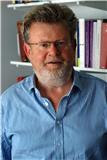Forty years ago, in his World Day for Peace message on January 1, 1972, Pope Paul VI declared, “If you want Peace, work for Justice.” Those were very significant words that, for good reason, have often been quoted throughout the last four decades.
Pope Paul’s peace proclamation was based partly on Isaiah 32:17 (“justice will produce lasting peace and security,” CEV). It also reflected the sentiments expressed in “Justice in the World,” a 1971 document drafted by World Synod of Catholic Bishops.
In that document the bishops pointed out how Jesus “proclaimed the fatherhood of God towards all people and the intervention of God’s justice on behalf of the needy and the oppressed.” They went on to declare, “Christian love of neighbor and justice cannot be separated. For love implies an absolute demand for justice, namely a recognition of the dignity and rights of one’s neighbor.”
Since 1968 the Catholic Church has designated the first day of every year as “World Day of Peace.” Pope Benedict XVI has chosen “Educating Young People in Justice and Peace” for the 2012 theme. In his 1/1/12 message, already made public, Pope Benedict declares, “Peace for all is the fruit of justice for all,” words resembling those of Pope Paul VI forty years before.
Not everyone likes the Church’s stress on justice, though. Back in March 2010, Glenn Beck, the well-known ultra-conservative political commentator, publicly criticized that emphasis. On his daily (at that time) TV and radio program, Beck even urged his listeners to leave churches which preach social or economic justice.
Since just before the presidential election in 2008, Barack Obama has been much criticized by some (mostly Republicans) for his supposed support for “redistribution of the wealth” in this country. Glenn Beck said that those words, as well as “economic justice,” were a part of the philosophy of both the Communists and the Nazis.
But Pope Benedict has just used those same words, “redistribution of the wealth”—and the Catholic Church has certainly never been a supporter of Communist or Nazi ideologies.
In his January 1 message the Pope stresses “the importance of seeking adequate mechanisms for the redistribution of wealth.” Those words were in the paragraph just before the one declaring that “peace is the fruit of justice for all.”
 I am not a Catholic, but I wholeheartedly agree with the words of the popes cited above. I am quite sure that there will be no lasting peace in the world as long as there is widespread injustice, such as that seen in attitudes and actions of discrimination (of any kind), oppression, or marked inequality. The latter includes economic inequality, especially when that is caused by exploitation, which is often the case.
I am not a Catholic, but I wholeheartedly agree with the words of the popes cited above. I am quite sure that there will be no lasting peace in the world as long as there is widespread injustice, such as that seen in attitudes and actions of discrimination (of any kind), oppression, or marked inequality. The latter includes economic inequality, especially when that is caused by exploitation, which is often the case.Both domestically as well as internationally, creating a more nearly just society is the only way to peace. Thus, all of us who truly want peace in the world must be active in working for justice.
I earnestly pray that you, your loved ones, and people around the world will have a Peaceful New Year.













.jpg)